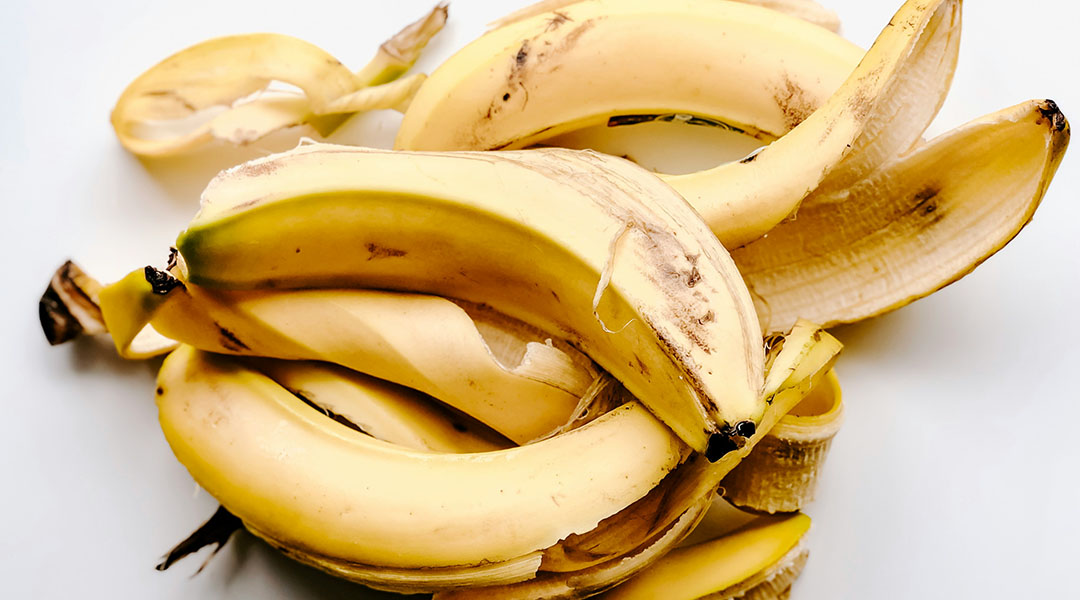Imagine a future where homes and communities are powered by food waste alone, bringing clean, affordable power to areas often overlooked by larger green technologies, like large-scale solar or wind farms.
Researchers at the Indian Institute of Technology Guwahati are working towards that vision with a groundbreaking device that generates electricity using simple, everyday materials.
By harnessing the power of ions moving across a membrane, they developed a proof-of-concept device that can be built with little specialized knowledge. The key ingredients? Coir fibres from coconut husks, along with electrolytes produced from charred banana peels and the citrus fruit Kuji thekera.
“Our aim was to convert the abundant bio-materials in rural areas and massive food waste in urban areas to affordable electricity,” said Kalyan Raidongia, the principle scientist of a paper published in Advanced Functional Materials describing the new technology.
“It is very well known in literature that mixing of aqueous solutions of different electrolyte concentrations or salinity, like seawater and river water, through ion selective membranes yields electricity,” he explained.
Known as a concentration gradient, ions in solution will move across a membrane from high to lower concentrations. As they move electrodes placed on either side capture the current and harness the electricity.
According to Raidongia, using concentration gradients to generate power has the potential to produce large amounts of clean, sustainable electricity but the technology has not yet been fully explored.
“Owing to its vast theoretical potential, more than 2.4 trillion watts, the concentration gradient is considered as one of the most potential alternatives to fossil fuels,” said Raidongia.
Coconuts and banana peels
Some labs have experimented with using high-tech materials, but Raidongia and his group envisioned a system reliant on readily available waste.
First, the membrane was prepared by staking coir fibers in parallel in a silicon polymer. The fibers have nanosized pores which offer direct passage for the ions. These where further optimized with an inexpensive nanomaterial produced from commercially available vanadium pentoxide crystals. This atomically thin layer increased the selectivity of the membrane for specific ions and increase electrical conduction but may impact the overall sustainability of the device as vanadium must be mined
The group next soaked banana peels and sun dried Kuji thekera in water to create a basic and acidic solution, respectively. Separating the acid and base solutions with the membrane produces a particularly energy intensive gradient.
“The selective migration of positively charged species from the acidic chamber to the basic chamber (driven by the neutralization process) creates a charge imbalance between the two chambers,” explained Raidongia. “Similarly, the movements of the charged species (H+ ions) through the ion-selective membrane leads to the development of an electric current,” he said.
With the recipe set, the team tested the new device and was excited to prove they could generate power. “This is a first demonstration of the possibility of converting bio-electrolytes from biowaste into electricity,” said Raidongia. “With these primitive devices, prepared without employing any sophisticated machineries power densities in the scale of ~ 10 W/m2 was achieved.”
Still room for improvement
While still a relatively small output, enough to power an LED light for example, the team believes that by experimenting with different electrodes and membrane structures this could easily be improved. Specifically, they are looking for more affordable and efficient electrodes as well as a replacement for the silicon polymer used to hold the coir fibres in place.
For example, replacing the silicon with clay, “will make these devices even more simple and affordable for rural areas,” said Raidongia, “just clay, coir-fibres and food waste.”
Reducing the cost and complexity of the device while improving outputs brings them closer to their goal of a power source that recycles food waste and can be built and operated by anyone, anywhere.
A full cost and environmental analysis of the technology hasn’t yet been done and the use of silcon polymer and vanadium may impact the sustainability of the device. However, the team is excited by this demonstration that food waste could decentralize power generation.
“Instead of producing large amounts of energy in one place and distributing it to different households or neighborhoods, every household can fabricate these devices with minimal training or education and start producing energy,” Raidongia explained. “The excess energy produced can be sold to common places like schools, colleges and offices.”
Reference: Kalyan Raidongia, et al., Synergetic Combination of Bio-Electrolytes and Bio-Fluidic Channels as a Novel Resource of Sustainable Energy, Advanced Functional Materials (2024). DOI: 10.1002/adfm.202414506
Feature image credit: Julia Kuzenkov on Unsplash

















